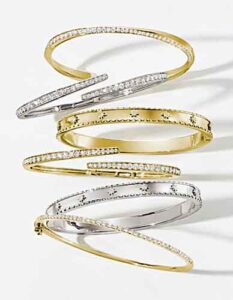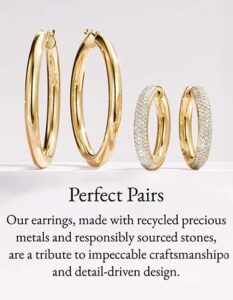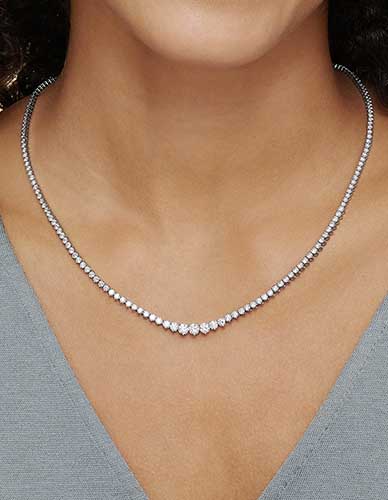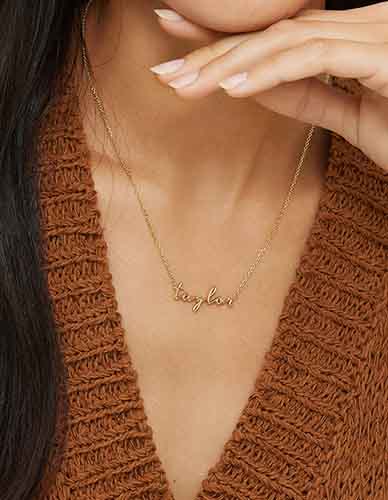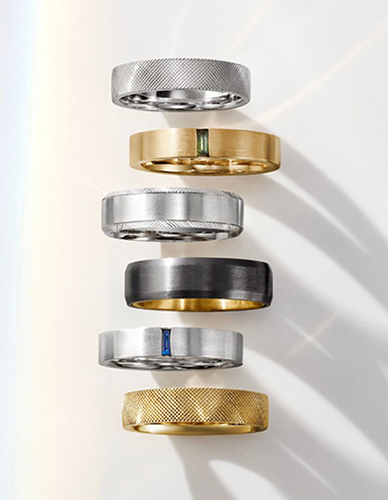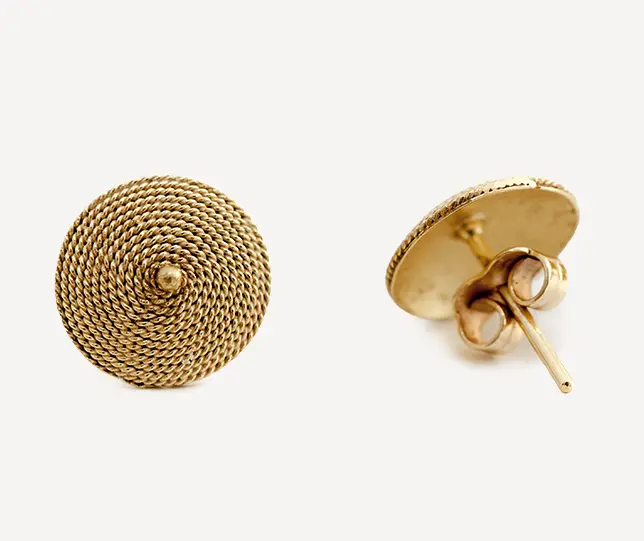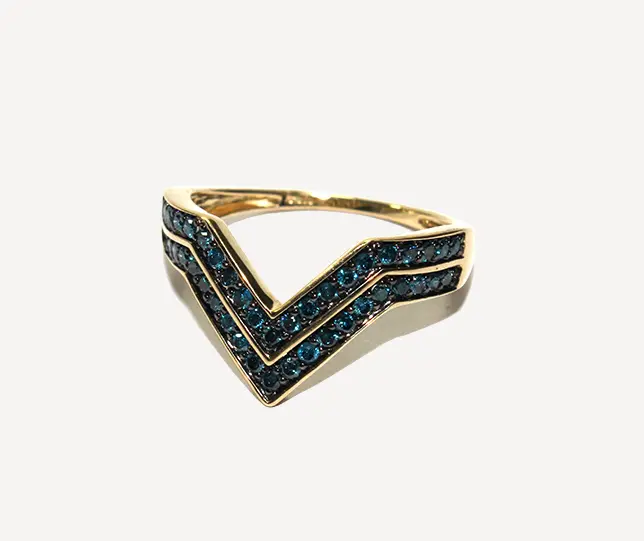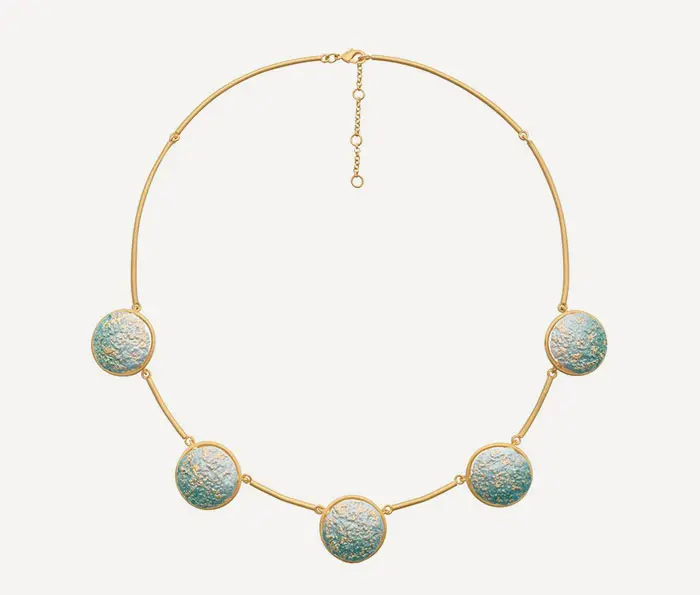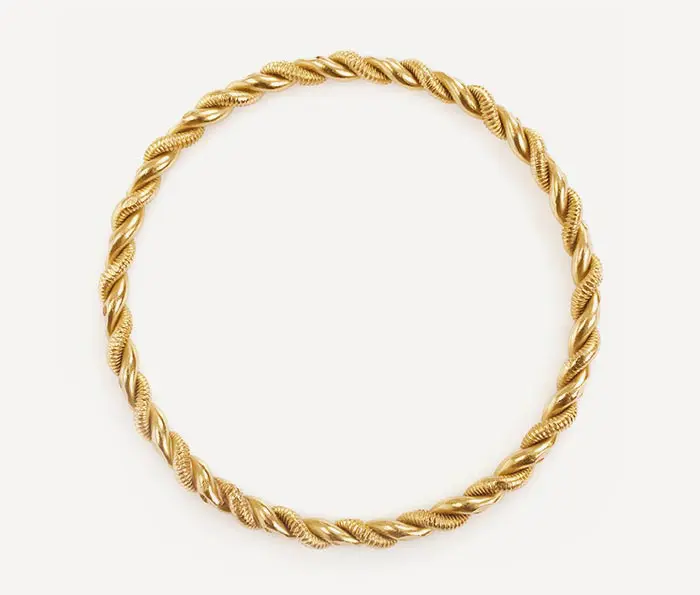Moissanite V.s Diamond
Learn how moissanite and diamond compare in appearance, durability, and price to select the ideal gemstone for you.
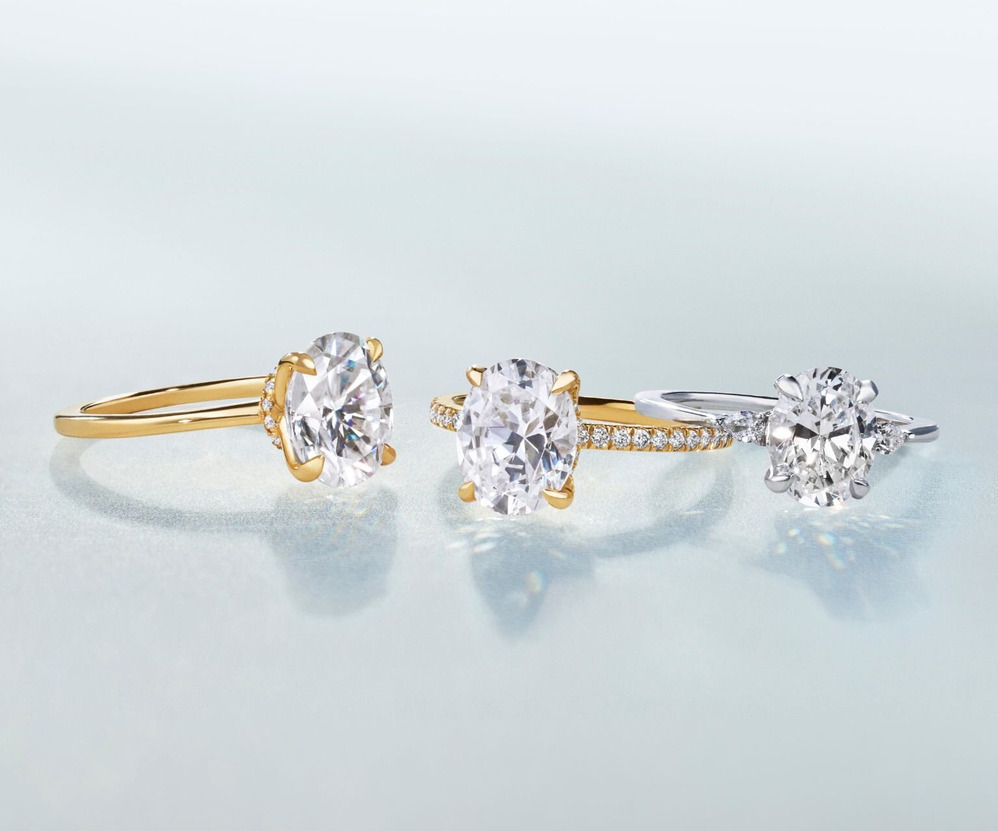
Moissanite V.s Diamond
Learn how moissanite and diamond compare in appearance, durability, and price to select the ideal gemstone for you.
What is Moissanite?
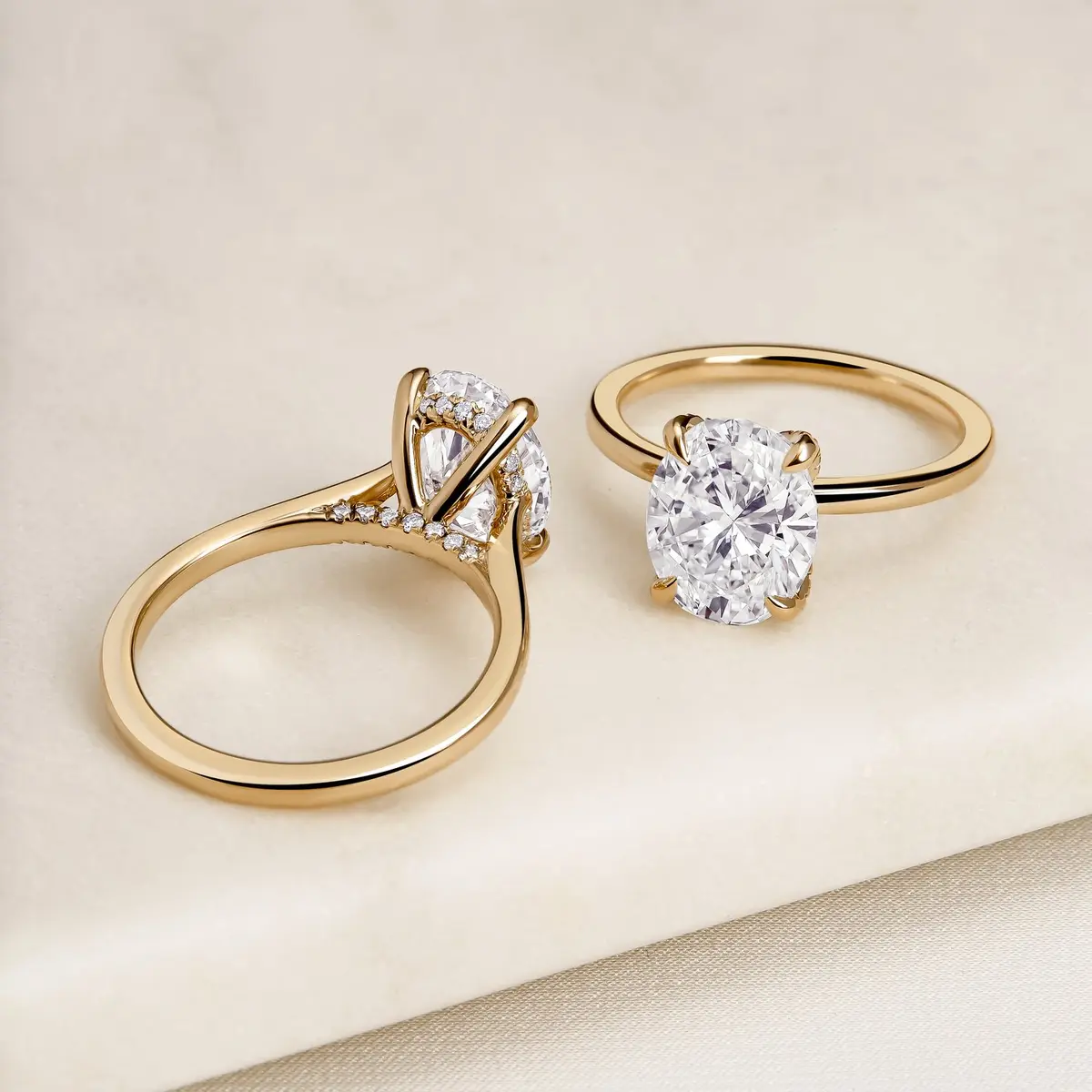
Moissanite is a mineral composed of silicon carbide. Often referred to as the gemstone from the stars, it was discovered in 1893 inside of a meteorite in Canyon Diablo, Arizona, by Nobel Prize-winning chemist Henri Moissan. Initially mistakenly identifying his discovery as diamonds, it wasn’t until 1904 that Moissan determined the crystals were, in fact, silicon carbide. This naturally occurring mineral form of what we now call moissanite was named in honor of Moissan later in his life.
In its natural form, moissanite remains very rare. It wasn’t until 1958 that geologists found it outside of meteorites: first, in the Earth’s upper mantle near Wyoming, and then, the following year, as inclusions in rock in Russia.
Today, moissanite is exclusively grown in laboratories as an alternative to diamonds. Created in a controlled environment with advanced technology, it is easily traceable and requires no mining. This means moissanite has a smaller carbon footprint and lessened environmental impact than a naturally mined gem.
Increasingly popular as an alternative to diamonds, moissanite is now widely used in jewelry, especially as the center stone of engagement rings.
Is a Moissanite a Diamond?
No, a moissanite is not a diamond. Professionals grow them in laboratories because they are visually similar to diamonds, but compositionally they’re quite different. Diamonds are composed of carbon and moissanites are composed of silicon carbide.
While the untrained eye may visually perceive a moissanite as similar to a diamond, it has a higher refractive index — meaning it produces more rainbow ‘fire’ than a diamond when light hits the stone’s surface. Diamond is also physically harder than moissanite, which is a 9.25 on the Mohs hardness scale compared to a diamond’s rating of 10.
While they both feature dispersion, scintillation, and are both considered to be good thermal conductors, moissanites and diamonds are otherwise distinct.
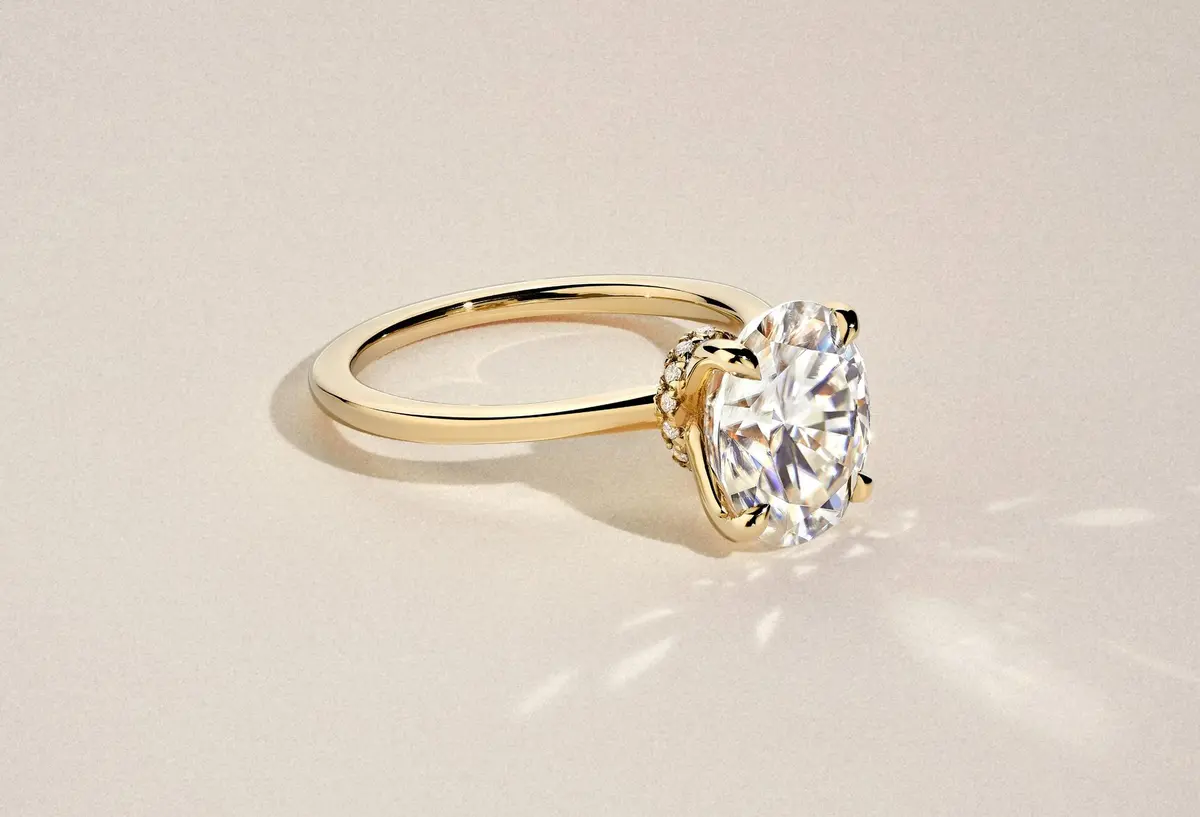
Moissanite vs. Diamond vs. Lab Diamond
Moissanite
Diamond
Lab Diamond
Durability
Gemstones are measured on the Mohs scale, which addresses a gem’s hardness.
Moissanites are at 9.25 on the Mohs scale, making them suitable for everyday wear.
Diamonds, the hardest known naturally occurring mineral, are a 10 on the Mohs scale, making them the ideal option for engagement rings.
Lab diamonds are a 10 on the Mohs scale, making them the ideal option for engagement rings.
Brilliance
Brilliance refers to the appearance of light reflected from the gemstone’s interior.
Moissanites are slightly more brilliant than diamonds, though they feature more than twice the amount of fire. If a moissanite is larger than 1 carat, the difference in fire can be very noticeable as it has a refractive index of 2.64 to 2.69.
Natural diamonds are slightly less brilliant than moissanite and feature two times less fire, though they still exhibit dispersion and scintillation. The refractive index of diamonds ranges from 2.417 to 2.419.
Lab diamonds are slightly less brilliant than moissanite and feature two times less fire, though they still exhibit dispersion and scintillation. The refractive index of diamonds ranges from 2.417 to 2.419.
Color
Color is the presence or absence of color visible within a gemstone.
While most moissanites can now be grown as colorless or near colorless, they are also created in hues of teal, grey, green, yellow, and black.
The rarest lab diamonds are those in the colorless range, but they are also created in many colors. Lab grown colored diamonds are more accessible than natural colored diamonds and can often be found in more vivid, fancier colors.
Price
Price references how much you will pay for a gemstone.
Moissanite is dramatically lower in price than diamonds of the same carat weight. Their pricing is based on size, shape, and whether the stone is colorless or near colorless.
Lab diamonds cost less than their natural counterparts due to their origin but cost more than moissanite. As with natural diamonds, lab diamonds are priced based on their 4 C’s and shape.
Sourcing
Sourcing refers to the origin of the gemstone and how it was produced.
Moissanite is grown in controlled laboratories by professionals. Once formed, they’re cut and polished.
Natural diamonds form deep in the Earth. Then, they are mined, cut, and polished.
Lab diamonds are grown in controlled laboratories by professionals. Once formed, they’re cut and polished.
How to Tell a Moissanite from a Diamond
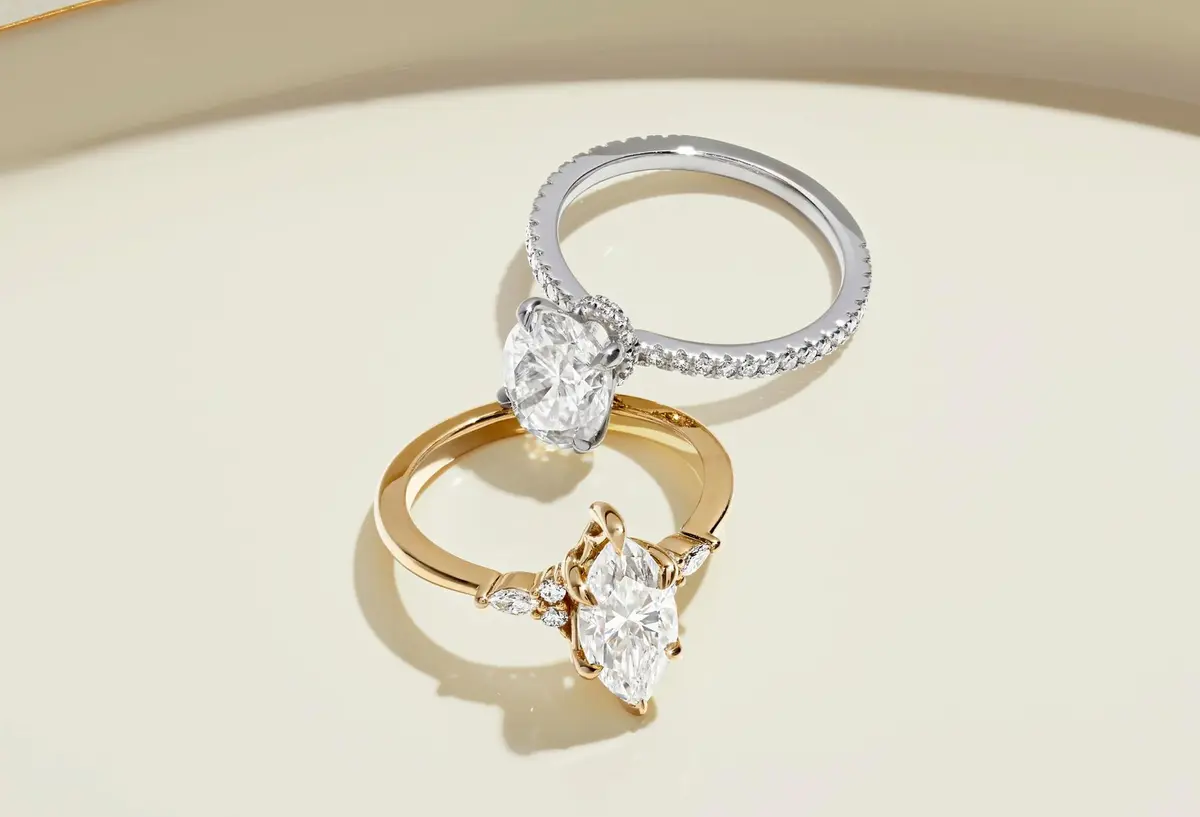
If you are not trained in the differences between diamond and moissanite, telling the difference can be difficult.
The best way to tell the difference is to line up two similarly sized gemstones, one moissanite, and one diamond, and compare them side-by-side. The distinct sparkle of a diamond is a unique combination of reflected light, the colors that refract through it, and its scintillation. While moissanite exhibits light reflection, color refraction, and scintillation, it also features more than two times the amount of ‘fire’ than diamonds, meaning it shows more intense flashes of rainbow light than diamonds. This ‘disco ball’ effect, which is more prominent in moissanite with larger carat weights, is the best way to quickly distinguish between moissanite and diamond.
To officially confirm the difference between a moissanite and a diamond, take it to a trained professional. By examining the ‘doubling’ of opposing facet junctions with a loupe, they can validate if your stone is a moissanite or a diamond.
Benefits of Moissanite

Mining Free
Moissanite is lab created with minimal environmental impact.

Value
Moissanite is less expensive per carat than many other gemstones.

Durability
Moissanite is a 9.25 on the Mohs scale of hardness, so they’re suitable for everyday wear.
Tips on Selecting a Moissanite
While shopping for a moissanite is not unlike shopping for any other gemstone, there are a few things to keep in mind.
Unlike diamonds that are graded by independent institutions on cut, color, clarity, and carat, moissanites are reviewed only for cut, color, and clarity. Then, at Brilliant Earth, they’re categorized by their color and rated as Premium or Super Premium. A Premium moissanite is similar to a G-H color diamond, while a Super Premium moissanite is in the D-E-F range. As the technology to create a moissanite is so advanced, there is very little variation in their quality.
Lastly, it’s most important to consider if moissanite is the right gemstone for you. To come to a conclusion, think about its difference from diamonds (its fire, scintillation, price, and durability) to determine if it’s your ideal fit.
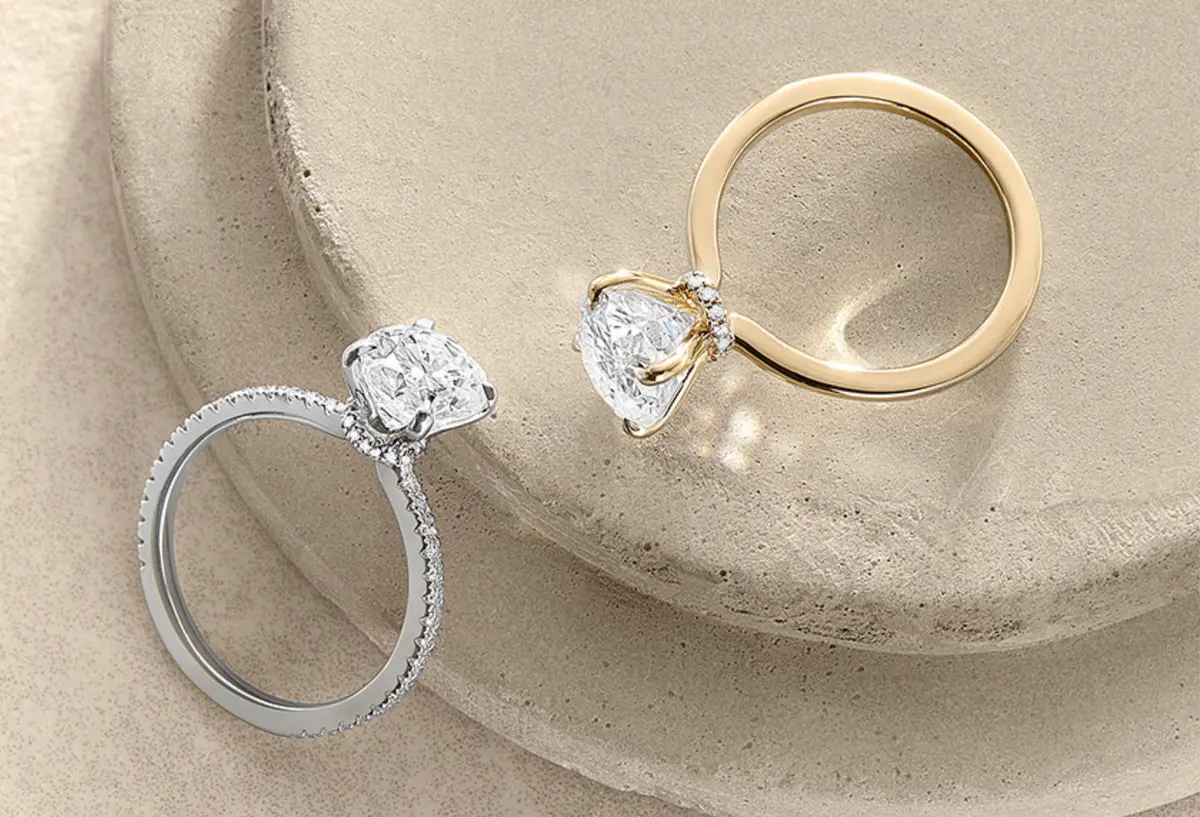
Most Popular Moissanite Rings
Explore our most popular settings to pair with a moissanite.
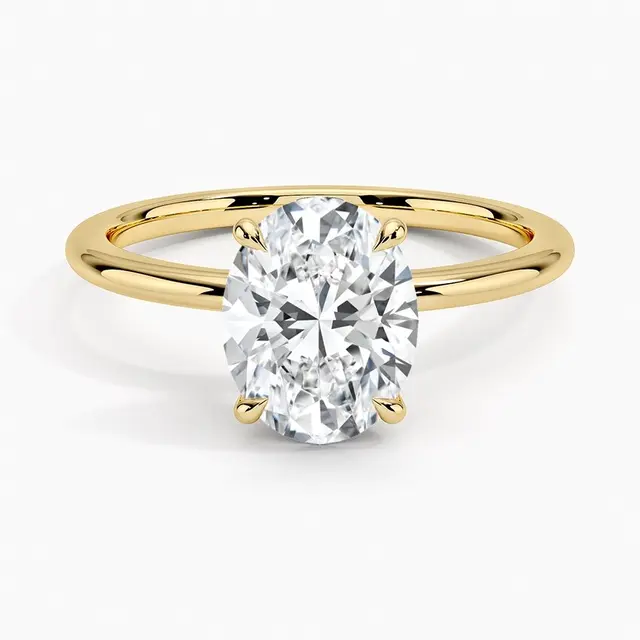
Moissanite Petite Elodie Solitaire
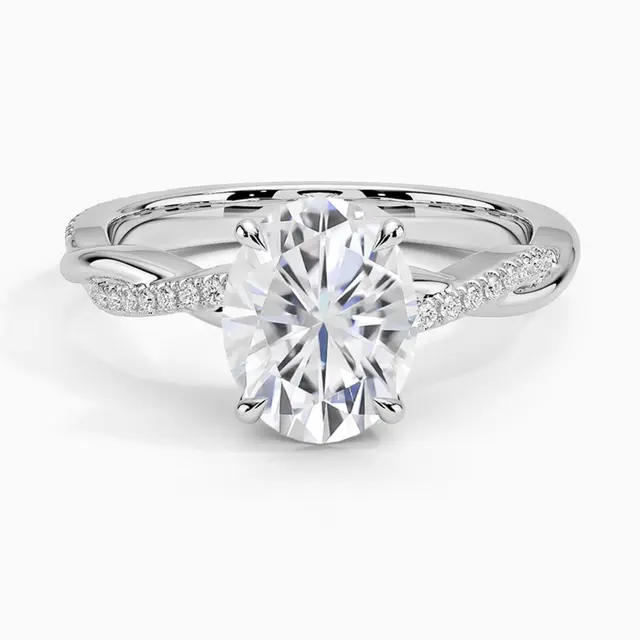
Moissanite Petite Twisted Vine
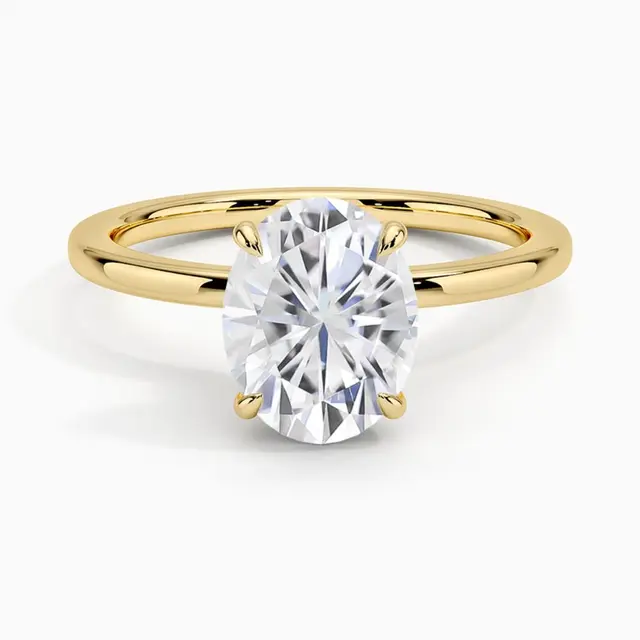
Moissanite Secret Halo
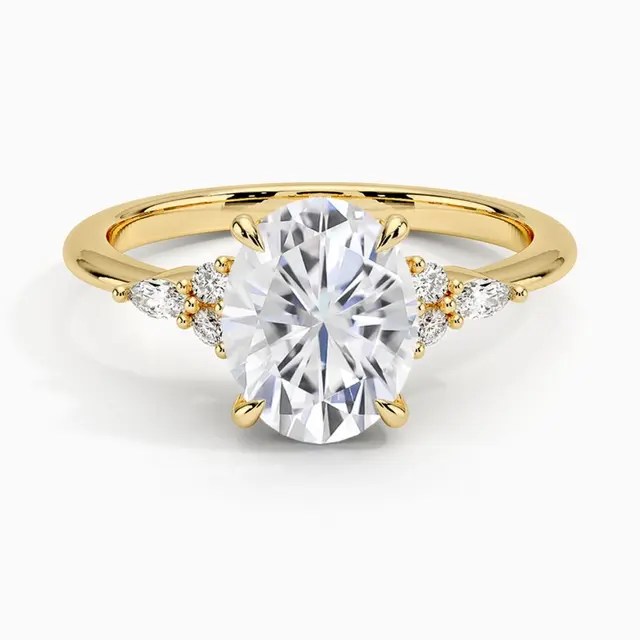
Moissanite Nadia
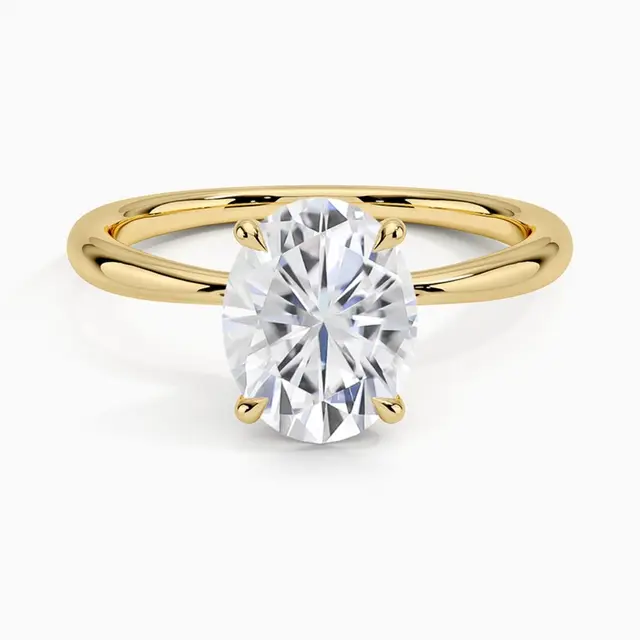
Moissanite Freesia Solitaire
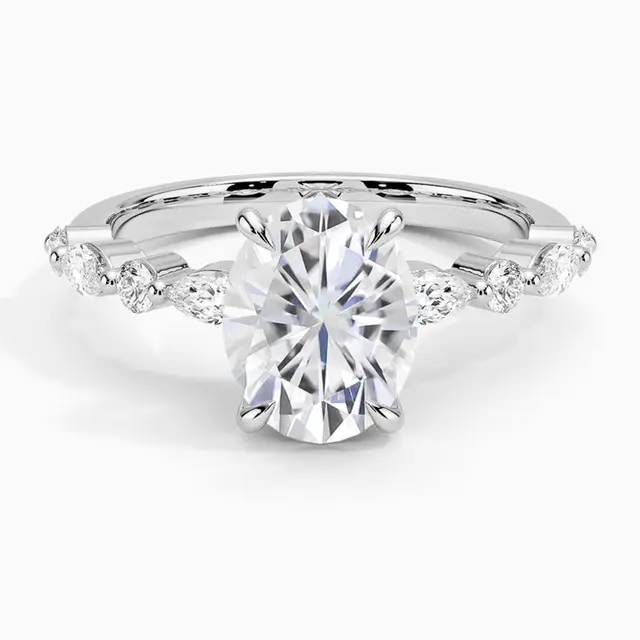
Moissanite Versailles
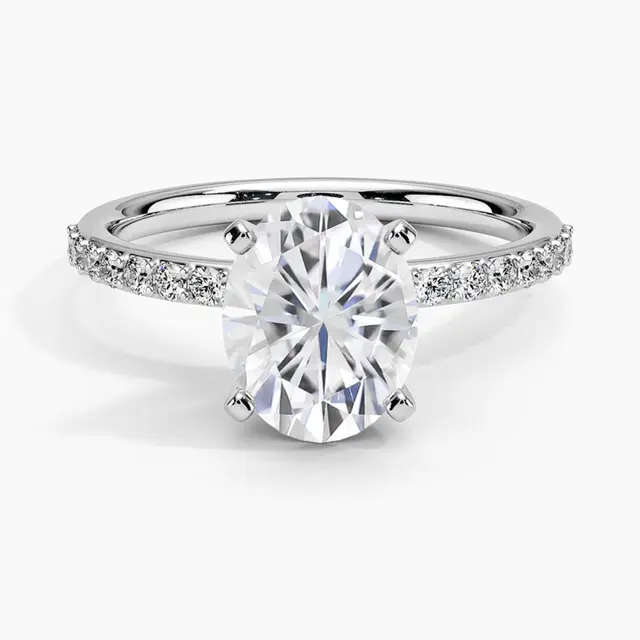
Moissanite Petite Shared Prong
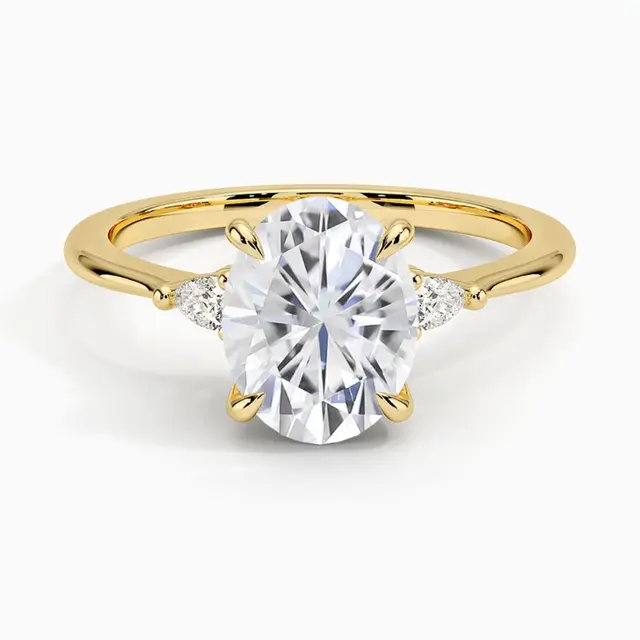
Moissanite Aria Three Stone
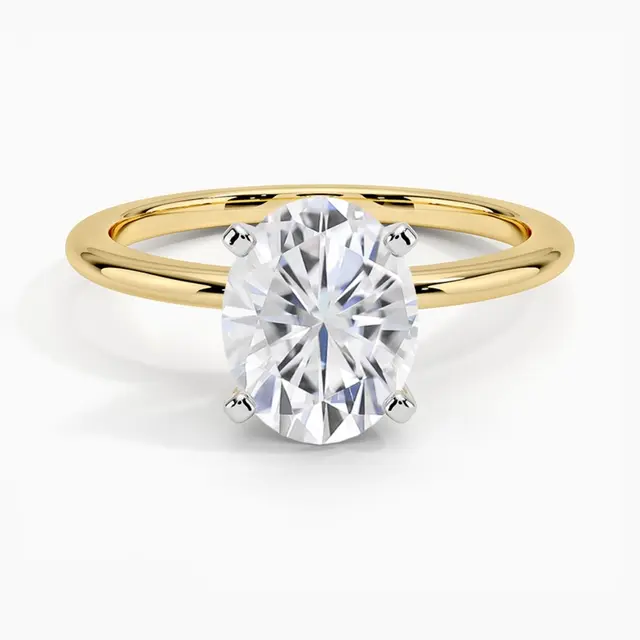
Moissanite Petite Comfort Fit Solitaire
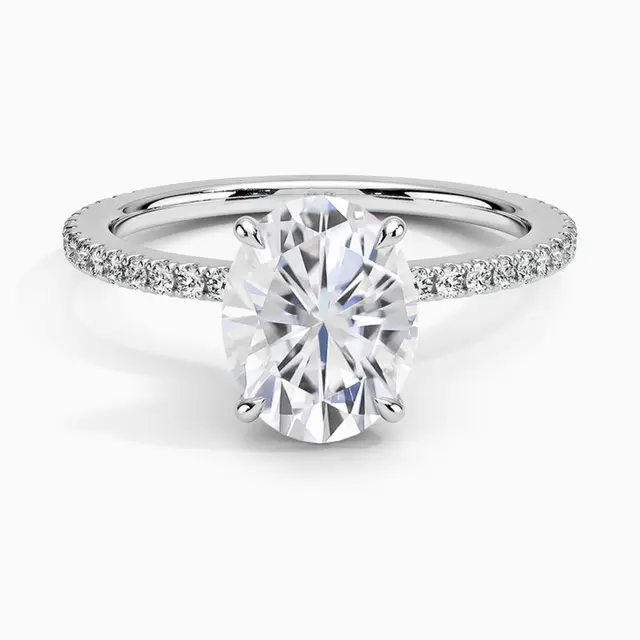
Moissanite Demi
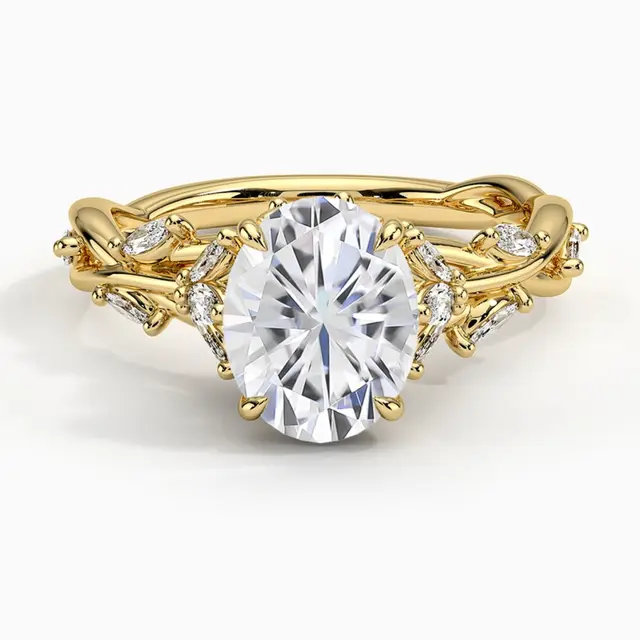
Moissanite Secret Garden
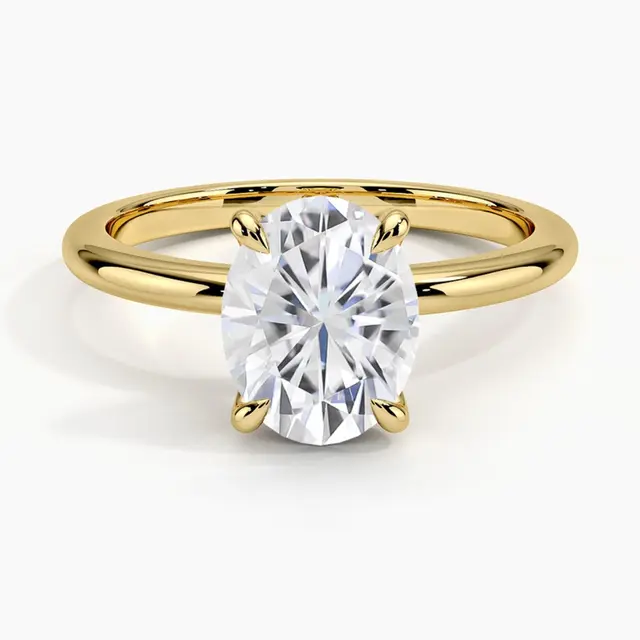
Moissanite Elodie Solitaire
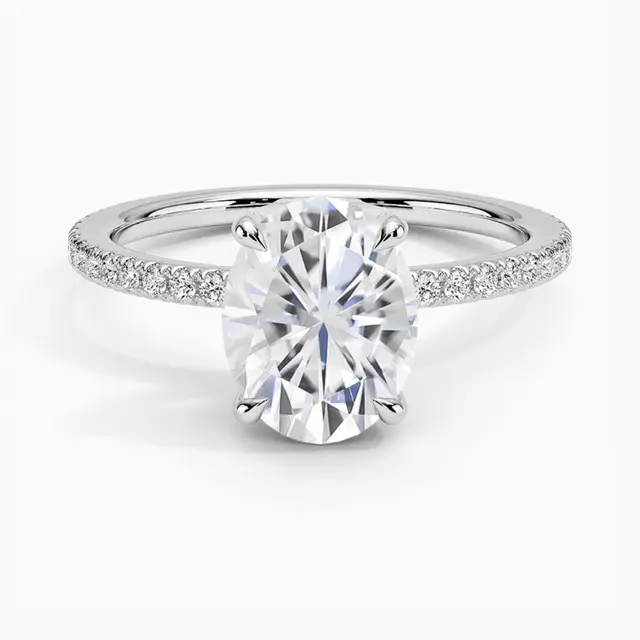
Moissanite Luxe Viviana
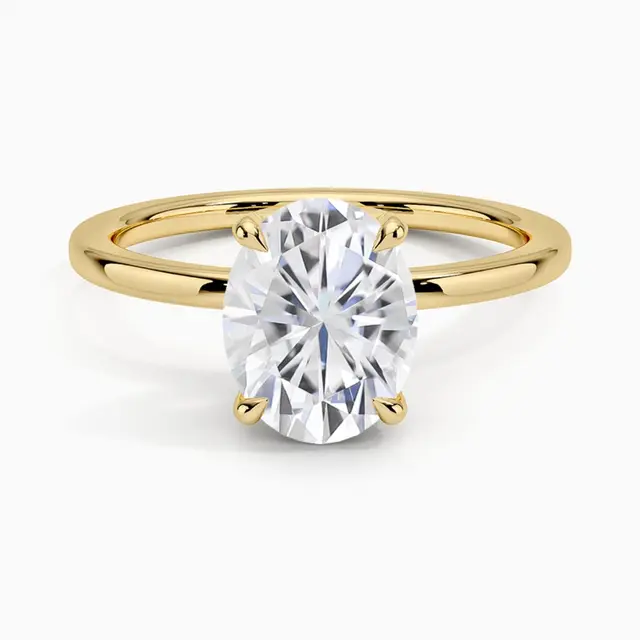
Moissanite Lumiere
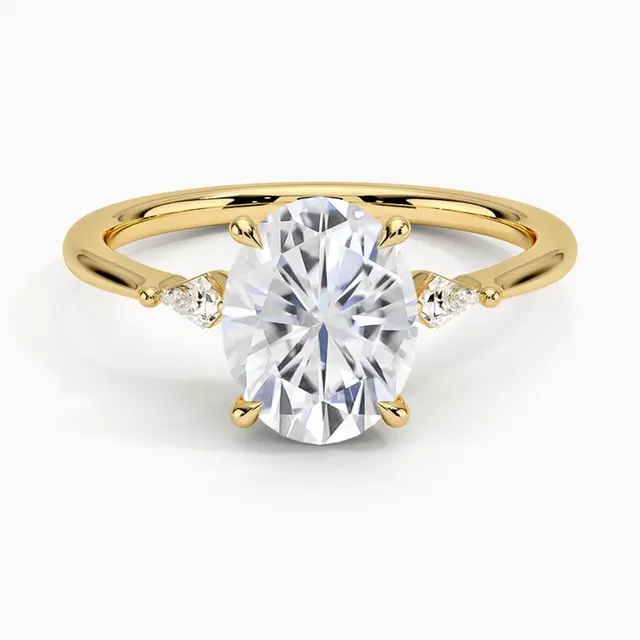
Moissanite Petite Cometa Three Stone
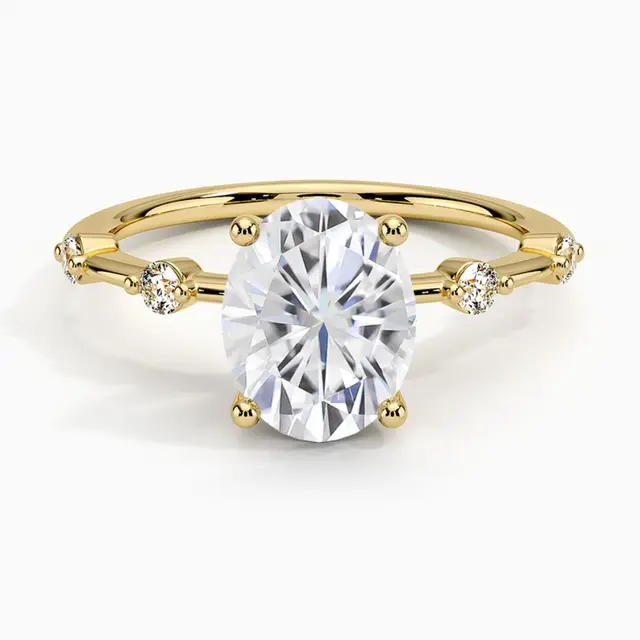
Moissanite Aimee
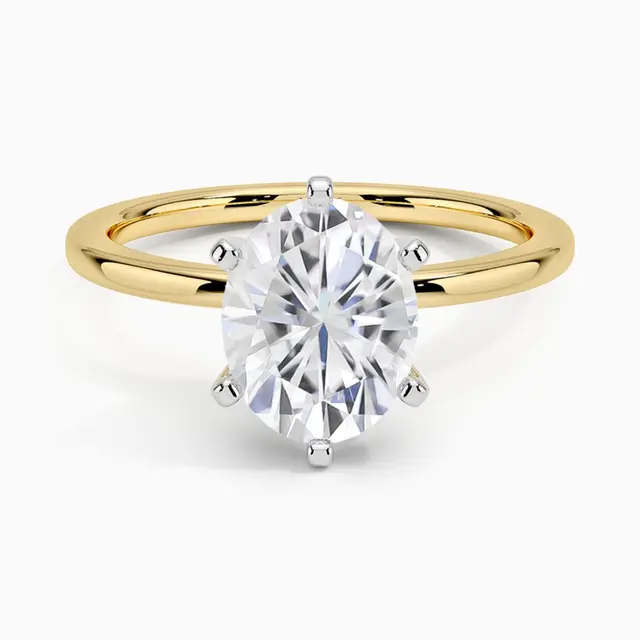
Moissanite Petite Comfort Fit Six-Prong Solitaire
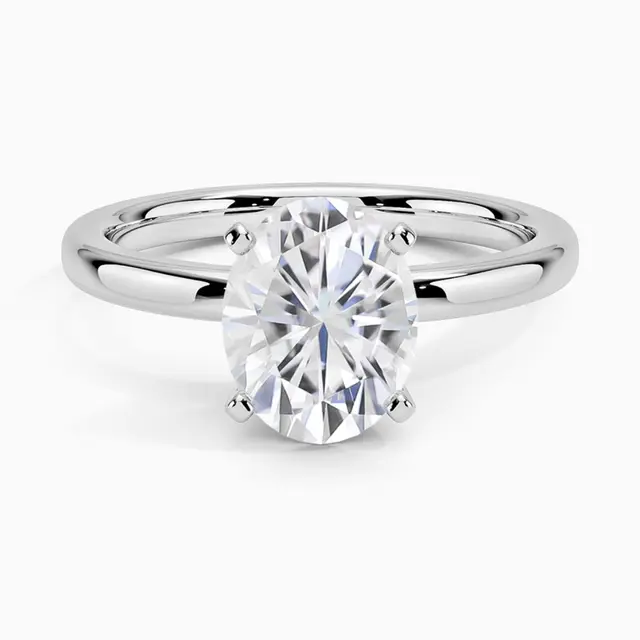
Moissanite 2mm Comfort Fit Solitaire
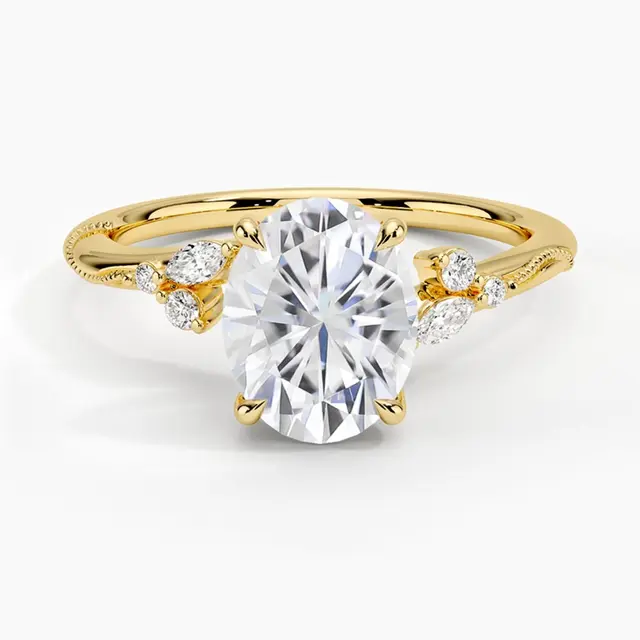
Moissanite Camellia Milgrain
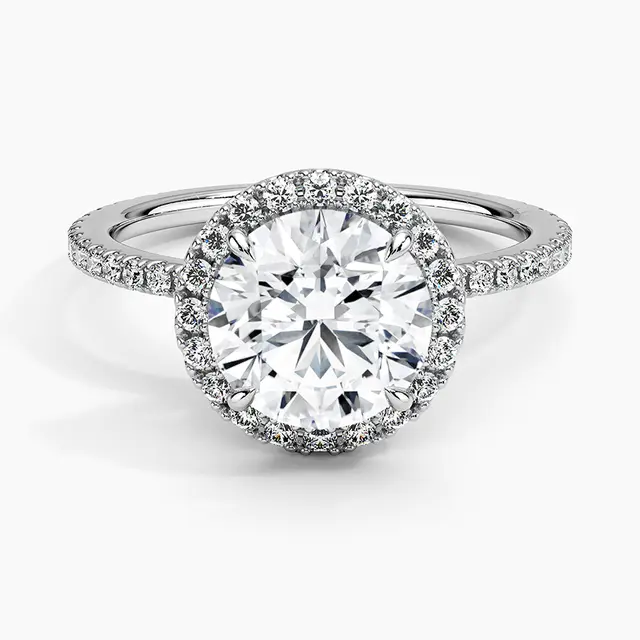
Moissanite engagement ring Moissanite Waverly Halo
Moissanite vs. Diamond FAQs
No, moissanite does not get cloudy over time. Read our Care Instructions for tips on how to preserve, protect, and clean your jewelry.
Moissanite is grown in a laboratory by professionals with advanced, specialized equipment.
Moissanites are strong, long-lasting gemstones. With proper care, moissanites can last throughout your lifetime and be passed down to future generations.
To the untrained eye, it can be difficult to tell the difference between moissanite and cubic zirconia. We recommend bringing your gemstone in to a trained professional who will be able to validate exactly what it is.

